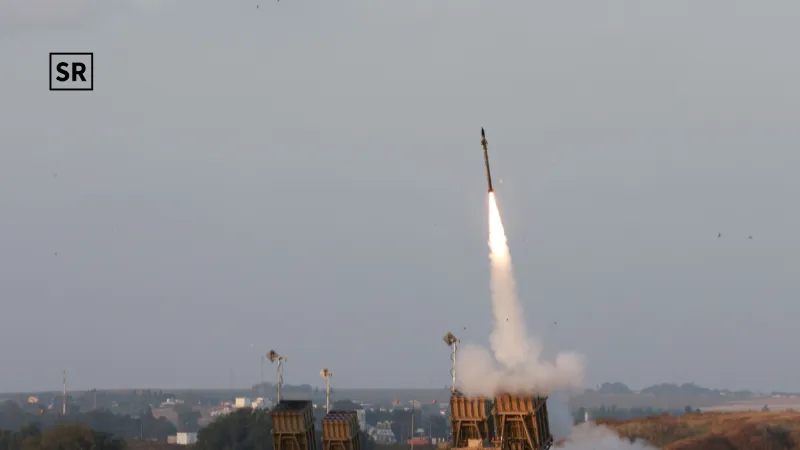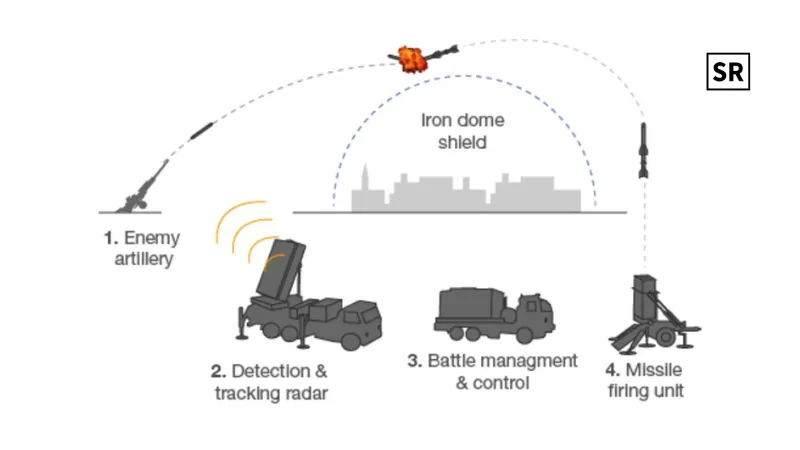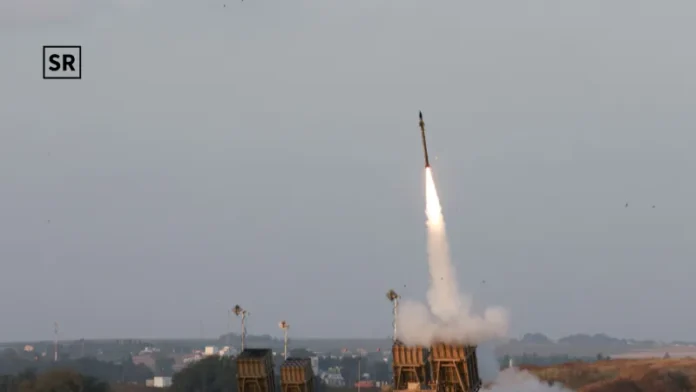
What is an iron dome?
The Iron Dome, known as “Kippat Barzel” in Hebrew, is one of Israel’s most important defense systems.
It was created to protect people in Israel from rockets and other short-range attacks by shooting them down with guided missiles. This mobile, all-weather system has been fully active since March 2011.
Israel’s Defense Ministry says the system has been upgraded several times and “successfully prevented countless rockets from hitting Israeli communities.”
The Iron Dome was developed in Israel by a government-owned company called Rafael Advanced Defense Systems, with support from the United States.
The U.S. still helps fund the system today.
Israel’s Defense Forces explain that the Iron Dome isn’t just one thing — it’s a mix of parts working together.
It includes the advanced technology, the machines that shoot down rockets, the soldiers who run the system, and the commanders who manage everything.
How does it work?

In simple terms, the Iron Dome uses radar to spot incoming rockets and figure out where they’re heading.
If a rocket is going toward a place that needs protection — like a city or important site — the system quickly sends out a Tamir missile to stop it in the air.
But if the rocket isn’t likely to hit anyone or cause damage, the system usually doesn’t react and lets it fall harmlessly.
A 2023 report from the U.S. Congress described the Iron Dome as a mobile system that can stop rockets, mortars, and artillery shells. It can intercept attacks from as close as 2.5 miles to as far as 43 miles away.
Israel is believed to have at least 10 Iron Dome batteries spread across the country. Each one can protect an area of about 60 square miles in size.
Every battery has 3 to 4 launchers, and each launcher holds up to 20 Tamir missiles.
A U.S. think tank, the Center for Strategic and International Studies, says that one Iron Dome battery costs over $100 million to build.
Since the Iron Dome became active in 2011, the United States has given billions of dollars to help Israel pay for its batteries, missiles, shared production, and maintenance.
Most of this money was approved by Congress, where both major political parties have strongly supported funding the Iron Dome.
However, the system isn’t perfect.
Experts have said it could struggle if too many rockets are fired at once.
In June 2021, a U.S. think tank called the Center for European Policy Analysis said the Iron Dome could be at risk during a “saturation” attack.
This means if many missiles are fired at the same time from different directions, the system might get overwhelmed and not be able to stop them all.
FAQs
Q: When did the Iron Dome become active?
A: It became fully operational in March 2011.
Q: How many Iron Dome batteries does Israel have?
A: Israel is estimated to have at least 10 batteries. Each battery can protect an area of about 60 square miles.
Q: Does the Iron Dome stop all incoming rockets?
A: No. It mainly targets rockets that are heading toward people or important areas. If a rocket is expected to land in an open area, the system usually ignores it.





